Rod Liddle
Rabbits, always rabbits. I remember at age 13 forcing my poor parents to trudge despondently across hilly downland on the borders between Berkshire and Hampshire, with me jubilantly pointing out stuff like: ‘Look, it’s the combe where Bigwig met the fox!’ and ‘I think this could be the Efrafa warren!’ For a while, Watership Down jostled uneasily with the grown-up stuff I was just beginning to enjoy – Jack Kerouac, James Thurber, Ray Bradbury – but it still held a big claim on me and does today. Better than On the Road, isn’t it? Watership Down also took me back from the awkwardness of puberty to the safety zone of post-toddlerdom and, of course, Brer Rabbit. I was seven before I got out of my Brer Rabbit obsession – you could keep Enid Blyton’s Famous Five, but I couldn’t get enough of her purloined Deep South rabbit stories. You can never have enough rabbits. One evening a couple of months ago, I watched the rabbits in my garden browsing nervily and said to my now grown-up daughter: ‘Look, they’re out for silflay.’ She grinned, slightly embarrassed. Watership Down has stayed with her, too.
Rory Sutherland
Look, I don’t know why we are even debating this. It has to be Dr Seuss’s Cat in the Hat. If it has any precedent, it must be Saki’s short-story The Storyteller, in which a lone traveller silences a train compartment containing a prim aunt and a gaggle of unruly children by telling them a wonderfully amoral and ‘improper’ story in which a terribly good girl called Bertha is rewarded for her goodness by being eaten by a wolf.
The Cat in the Hat came out in 1957. Schools were reluctant to buy it, because of its irresponsible protagonist. Unsurprisingly it was an instant hit with the children themselves. At a time when most children’s characters were insipid and used as vehicles for moralising messages, the Cat in the Hat was a badass. Indeed he was the first children’s character who might plausibly be described as ‘cool’. He even has his own entourage, in the form of two sidekicks called Thing One and Thing Two. And he wears nothing except a comedy top hat and a bow tie. It’s the kind of raffish outfit an Englishman might try on in an unsuccessful attempt to seduce his wife after a few too many pints, but the Cat somehow carries it off convincingly.
Interestingly, I have since discovered that there is a Freudian interpretation of TCitH. The Cat represents the Id, and the tediously responsible fish represents the Superego. The children (the Ego) are hence forced to mediate between the two conflicting forces. Even Dr Seuss himself was happy to give the story a deeper meaning. In an interview, he once said: ‘The Cat in the Hat is a revolt against authority, but it’s ameliorated by the fact that the Cat cleans up everything at the end. It’s revolutionary in that it goes as far as Kerensky and then stops. It doesn’t go quite as far as Lenin.’
I would favour another explanation involving the fragile balance between the Dionysian and the Apollonian. The book is in many ways a worthy precursor to Iain McGilchrist’s The Master and His Emissary.
Matthew Parris
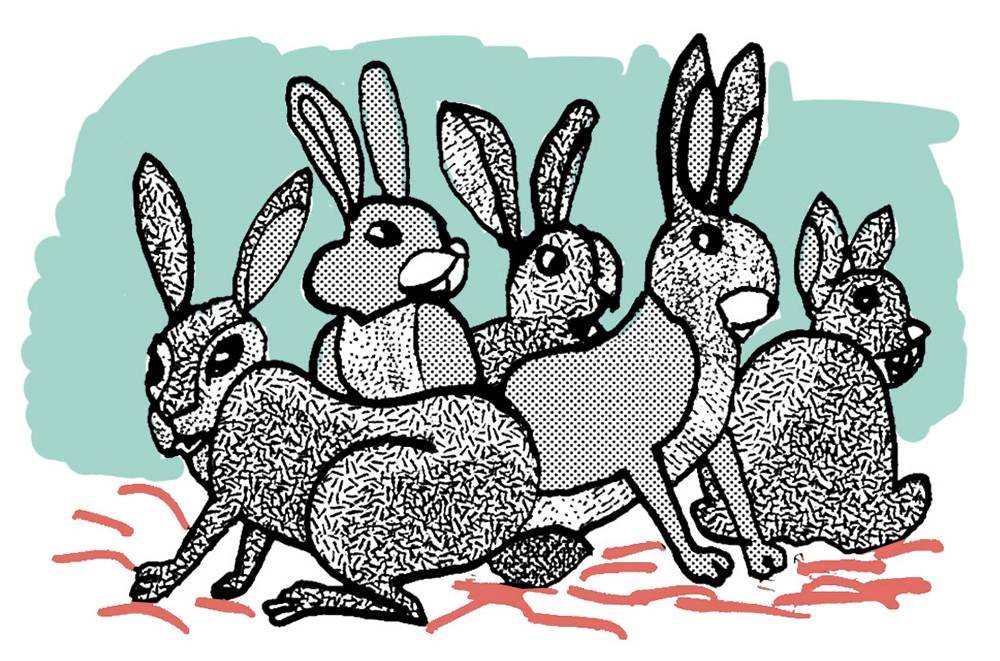
I read Animal Farm when I was about nine, pulling it from a shelf, not realising it was an allegory, and supposing it was just a story about animals who took over the farm – and I loved animals. It was a page-turner for a small boy: strong narrative and lovely simple prose. After a couple of chapters, I supported the pigs. It struck me that equality would not work, authority was required, and somebody had to get a grip. This helped form my political views in a way George Orwell might not have intended. I recommend the book to other little boys and girls.
Lionel Shriver
I always identified with characters in story-books who don’t do as they’re told. I loved the Curious George series, because the monkey was mischievous and always getting into trouble. The children in The Cat in the Hat make a total mess of their house and get away with it. I liked characters who are rebellious. I also identified with characters who are fiercely independent (Pippi Longstocking) and who have rich inner lives to which adults are oblivious, such as the boy in Where the Wild Things Are. The children in C.S. Lewis’s Narnia series live in a secret, complex parallel world on the other side of the wardrobe that the grown-ups know nothing about, and in this other world the children function as powerful moral agents who affect crucial outcomes, not as helpless, dependent little kids. I would have hated the goody-goody progressive books that nowadays try to get children to recycle and fear climate change. I was impatient with being a child and yearned to assert myself. I’d have recognised condescending propaganda from a mile away.
Quentin Letts
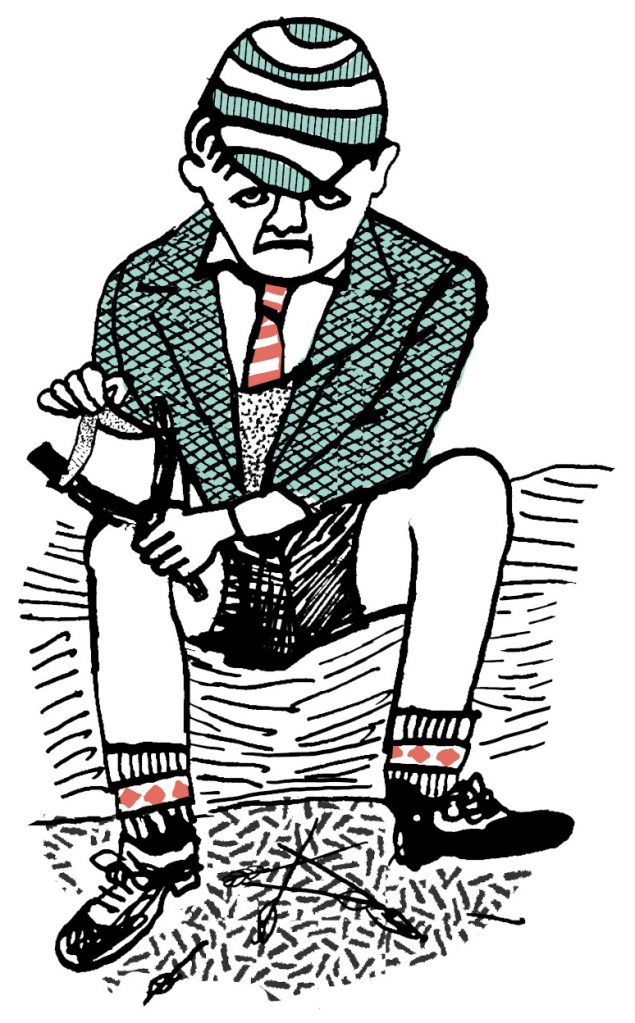
Nowadays we are supposed to hail darkest Peru’s Paddington as an immigrant but I lay no claim to any virtue when saying he was my favourite figure in children’s fiction. I liked him simply for his marmalade sandwiches – a great weakness of mine – and for being politely bloody-minded. When we went on family holidays and border officials or Spanish waiters invariably gave my very English father some gyp, I would punish them a ‘Paddington stare’. These were satisfying to administer and, one liked to think, unsettling to the recipients. But surprisingly tiring if you do them properly.
Melissa Kite
Katy Carr planned to do a great many wonderful things, and in the end did none of them, but something quite different. What Katy Did by Susan Coolidge is a story of redemption, about how life rarely turns out the way you planned. If there are any iron-willed, defiant young girls out there who get into trouble a lot, Katy Carr will be your heroine. When she falls off the swing after refusing to obey her aunt telling her she shouldn’t use it, her life spirals into despair. The turning point is finding a female role model who is both tough and feminine. I love that this story tells us that in our darkest moments, in territory that feels completely uncharted, in situations we cannot believe we can turn around, we may still find someone who has gone ahead of us, who can show us the way.
Toby Young
Oddly, I really liked the Jennings books. As a boy educated in the state sector, the world of public schools was glamorous and exciting to me. I suppose it’s a bit like the Harry Potter books for state-educated millennials. Jennings was a more wholesome version of William Brown – a cross between William and Emil from Emil and the Detectives, which I also loved. He wasn’t a goody two shoes, more of a muscular Christian in the finest English public school tradition. Today, William would be a presenter on GB News, whereas Jennings would be a Lieutenant Colonel in the SAS. I’ve tried to interest my own children in the books I loved as a child but with no success. They look at me as if I’m asking them to send a fax – books are so outside their frame of reference it just doesn’t compute.
Julie Burchill
Without doubt it would be the junior ballerinas who featured in the Wells books by Lorna Hill. Before I grew to be 5ft 10in at the age of 14, I always supposed I would be a ballet dancer, and took lessons three times a week from the age of five: I was very good. The dedication of these girls to their craft is still an excellent example to all young women.
Lara Prendergast
I was a goody-goody as a child but longed to be as rebellious as Eloise, the little girl from Kay Thompson’s series who lives in the Plaza in New York. She has no time for authority and is forever winding up everyone from the bellboys to the grandes dames with their powdered hair and Chanel suits. She has few friends aside from her pug dog, Weenie, and her turtle, Skipperdee. Nanny tries her best but fails. Eloise’s mother is absent and occasionally represented by her Virginian lawyer. Eloise gives him rubber candy and ‘he is absolutely so dumb he eats it’. In many ways it is a story of childhood neglect, but Eloise never feels sorry for herself. There is too much fun to be had ordering meringue glacée, amputating her dolls’ arms with a hacksaw and teasing her French tutor. Eloise’s addiction is to room service – ‘charge it please’ – and if she taught me anything, it is that fortune favours the brat.
Bruce Anderson
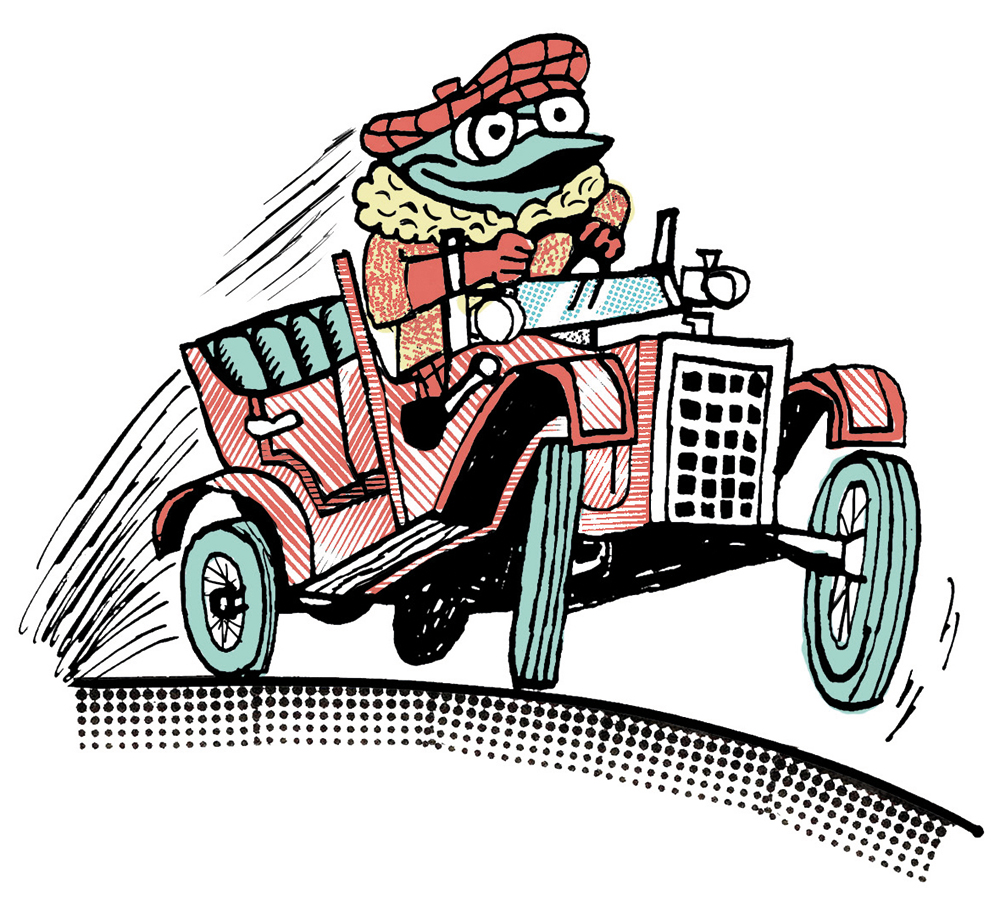
I very much enjoyed Just William and G.A. Henty, but the crown goes to King Solomon’s Mines. I do not think I have ever enjoyed a book more at the time of reading. I followed it up with all the main Rider Haggards, and I hope that today’s children will have the chance to enjoy such splendid imperial fiction. One caveat; I picked up Solomon’s Mines in a friend’s house the other year and it no longer worked, at least for me. But the enchantments should still be there for the right age group.
Melanie McDonagh
There’s Dido Twite, the spirited heroine of Joan Aiken’s Black Hearts in Battersea. There’s the Psammead, the worst-tempered creature in fiction, from E. Nesbit’s Five Children and It. Or there’s Mary Poppins, that extraordinary combination of strangeness (she paints the stars on the sky) and safety we all want as children. There’s Patricia Lynch’s Brogeen, the pre-eminent leprechaun, or Bilbo Baggins, unfilmed. But the figure who has lasted best from my childhood reading is Toad of Toad Hall, who is vain, boastful, fickle, duplicitous and extravagant – and yet which of us has not known Toad? When children’s fiction is reduced to the safe and sanctioned, Toad will be for generations to come a reminder of happier times: a reprobate and a snob who is lovable because of his sins. He is one of the immortals.
Quentin Blake
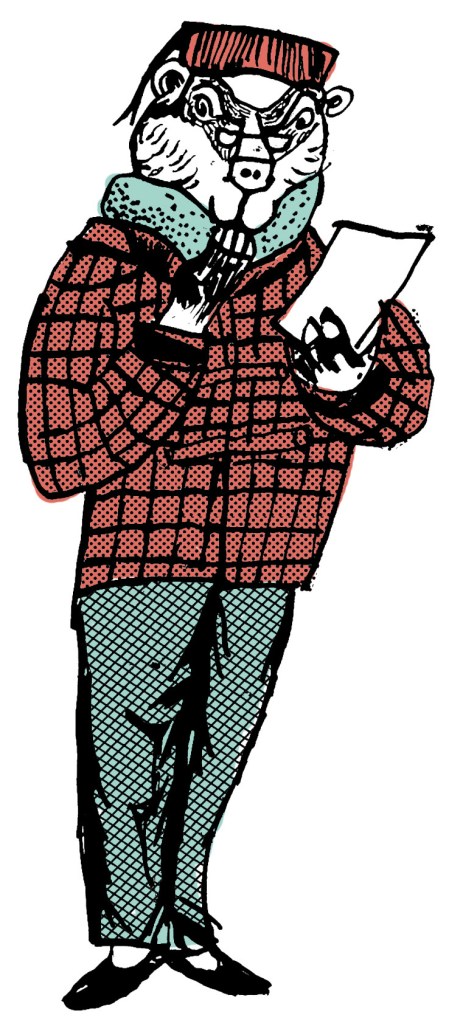
The most memorable is unquestionably Mr Leakey. He is the hero of a small collection of short stories, My Friend Mr Leakey by J.B.S. Haldane. Mr Leakey is a magician, but what is attractive is that there is none of the dressing up and stars and sparkles; he is a professional magician in the way that someone might be a professional surgeon or architect. And he dresses formally and has a top hat. The difference perhaps is that at dinner he pours soup out of his top hat and his assistants are equally unusual – there is an octopus able to hold on to the ceiling and distribute the cutlery, and a small dragon in boots to bring out the hot dishes. My copy was illustrated by Leonard Rosoman – they are beautiful drawings and their elegance and formality somehow make an interesting contribution to the facile nature of the activities.
Now there is a moment of embarrassment. Many years after my first reading of Mr Leakey, when I had become a practising illustrator, I was invited to illustrate the book myself. The problem was that I very much admired Rosoman’s pictures and, as it happened, we were both teaching at the Royal College of Art at the same time. Alas, I couldn’t resist the offer. I made my drawings as different from his as possible and they were smaller and more frequent. I thoroughly enjoyed the experience.
Rachel Johnson
William Brown was the first character that popped into my crowded cerebellum. Wrinkled of sock, derisive of temperament, scornful of female histrionics and adult ways, devoted to his dog Jumble, he is the original and best disruptor in fiction and like P.G. Wodehouse’s, Richmal Crompton’s world never stales. And the audio books read by Martin Jarvis aren’t half bad either.
Peter Hitchens
What a pleasure it was to meet Mr Badger, in The Wind in the Willows. Not only was this a book for those who could find pleasure in winter and autumn, and frosty evenings, rather than in the boring heat of summer. It was also a book for those of us who actually aren’t all that keen on parties and crowds. Like all introverts, I had and have no difficulty in understanding extroverts. I am very happy for them. But I have always suspected that it doesn’t work the other way round. Extroverts think I must be miserable because I don’t share their pleasures. The character of Mr Badger has always been a simple way of explaining, first to other children and now to adults, that I too may be enjoying myself, even though it does not look as if I am.There are a few purple bits I’d cut out, but The Wind in the Willows is still as good a read now that I’m 72 as it was when I was ten, and Toad’s footplate escape is still one of the most thrilling passages in English story-telling, especially the moment when they realise they are being pursued.
Anthony Horowitz
It has to be Tintin. When I was trapped in a grim boarding school at the age of eight, the intrepid reporter (who never actually wrote anything) brought colour, humour, adventure, friendship and escape to my otherwise dreary life. I loved the world he inhabited, his many eccentric friends and his travels all over the world and, indeed, beyond. The Seven Crystal Balls and Prisoners of the Sun are the two masterpieces I’d recommend. They will bring joy to any modern child.
Douglas Murray
One of my favourite reads as a boy was Just William. Richmal Crompton’s world was one I wanted to live in, and felt like I occasionally visited. I was thrilled that there was a Douglas in William’s gang, though suspect I identified with the principal hero of the stories. As a family, on the long summer car journeys to the Outer Hebrides, we would listen to Martin Jarvis’s readings. I remember one time my father had to pull over because he, like all of us, was laughing too hard. I can still hear the voices Jarvis performed. And of course his Violet Elizabeth Bott is definitive. The only sadness was I remember the number of times that my friends and I tried to make liquorice water. It never was drinkable.
Mary Killen
Three generations of my family have revelled in the world of the 11-year-old schoolboy William Brown and his gang of friends, the Outlaws. Richmal Crompton’s timeless tales (more than 38 books) take place in a manageably-sized English country village full of woodland and barns to play in and social stereotypes still recognisable today – Mr and Mrs Bott, the nouveau-riche sauce magnates who have bought the Big House, their spoilt daughter Violet Elizabeth, burglars, pretentious musicians and artists, vicars… The plots are hilarious and the language unmodified for children, e.g. ‘Henry was about to dispute this view when Ginger interposed pacifically’.
Ian Rankin
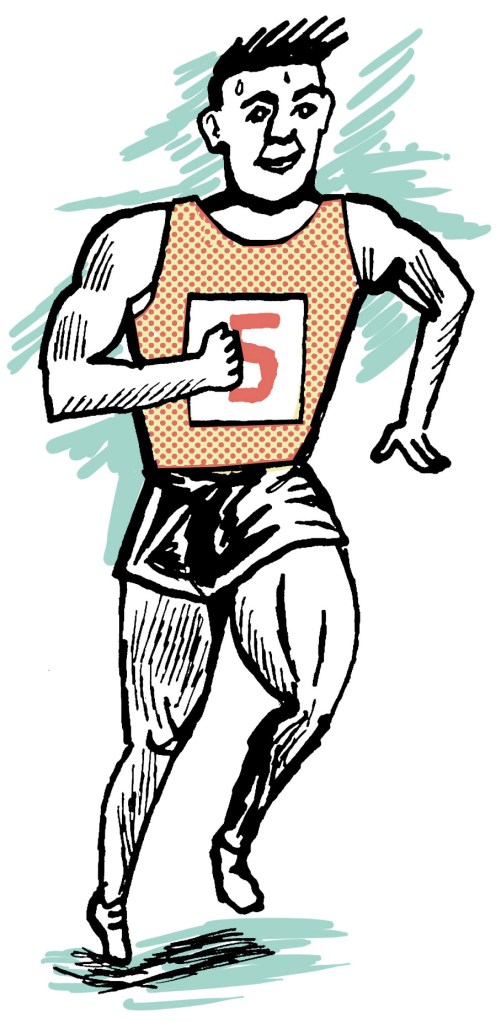
As a child I didn’t read many of the ‘classics’ but I did buy a lot of boys’ comics and my favourite character was Alf Tupper, aka ‘the Tough of the Track’. He appeared in the Victor weekly comic and was a working-classhero who won his track races after polishing off a helping of fish and chips. He lived with his aunt, slept on a mattress, worked as a welder but had natural talent – and he was looked down on by the posh runners he often came up against, and by the bureaucrats who ran the competitions. With his cheap haircut and his bog-standard sports shoes, he told me that talent could win through, however lowly your background.
Susan Hill
Lewis Carroll’s Alice entered my life and burrowed deep into my imagination when I was four and has never left it. But she was born adult and timeless, a pert, inquisitive, trite little girl with an alarmingly direct manner,the only possible character to experience such adventures and encounters and, above all, conversations. She is unique. Others have tried but never come within miles of creating such a strange and rather alarming child.
Lloyd Evans
Timmy the Dog in The Famous Five by Enid Blyton. He was like a protective deity who communicated telepathically with George. And he used to save the children at the end of an adventure by pouncing on the baddies (smugglers usually). I doubt if today’s youngsters read Blyton or anything else. Probably just as well. Reading is just a second-hand version of being alive.
Philip Hensher
I loved J.P. Martin’s Uncle books. They are so hugely inventive that they are quite hard to describe. An immensely wealthy elephant of almost unspotted virtue, Uncle lives in a gigantic palace of skyscrapers, Homeward. He is surrounded by supporters, tenants, hangers-on, sycophants. His life, however, is made troublesome by a gang of enemies living opposite. I wish I could afford a set of the first editions – they are wonderfully illustrated by a young Quentin Blake, and were never printed in large numbers so they now go for a fortune.







Comments